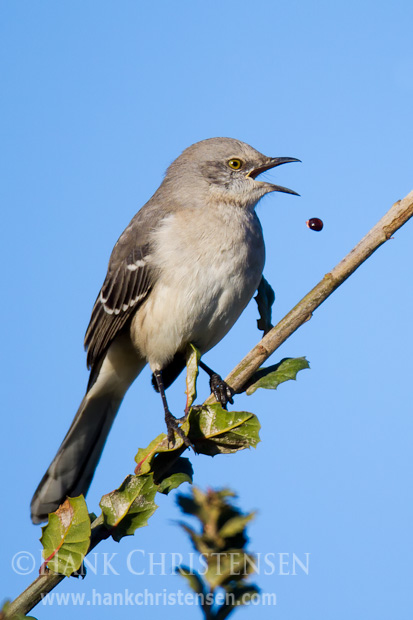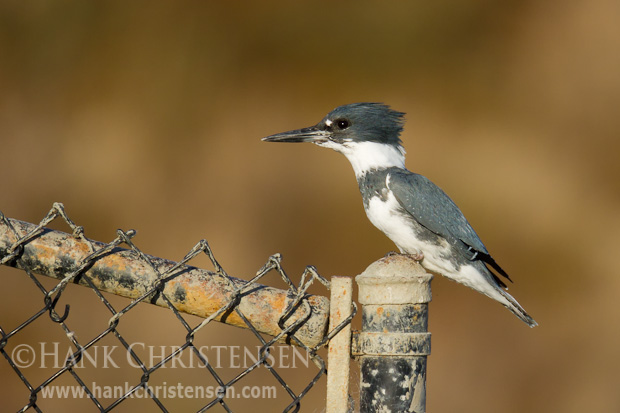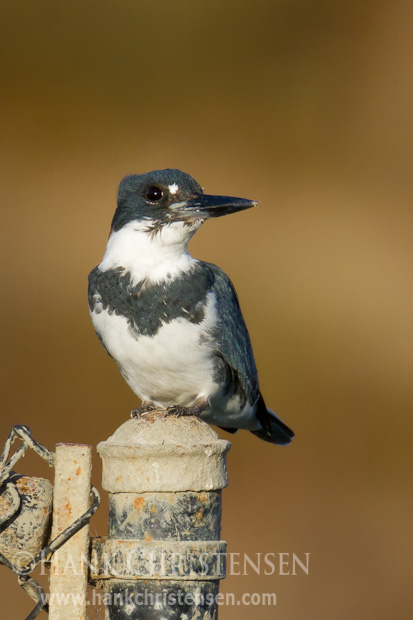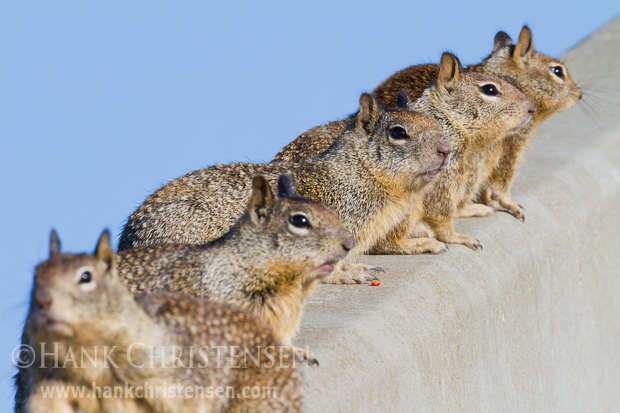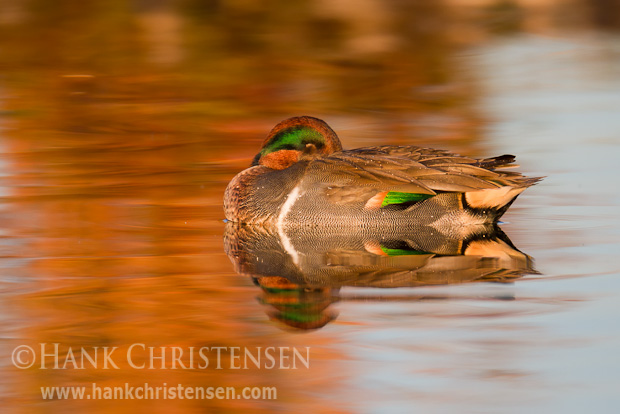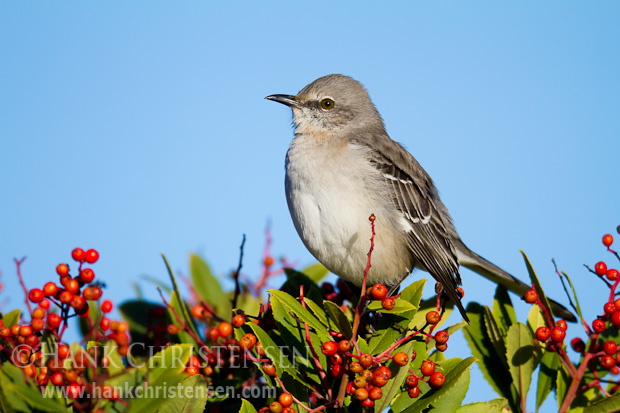
Recently I photographed a Northern Mockingbird perched on a berry bush. It appeared as if he was gorging himself on berries, stuffing one after another into his mouth. Soon after this feast, he flew from the bush to a nearby tree. He began working his mouth up and down, and to my surprise, a berry emerged from his mouth and into his beak, as seen in the photo below. After he ate one berry, he again worked his beak up and down, and a second berry emerged.
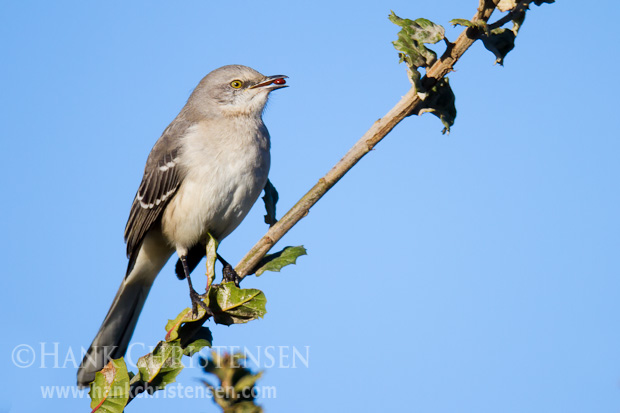
I realized that when I first saw the mockingbird chowing down on berries, he was actually stuffing them into his mouth for later consumption. I couldn’t find any notes about this behavior online, but it was quite a sight to see berry after berry magically appear in his beak. However, not every berry worked out so successfully, as can be seen in the photo below.
